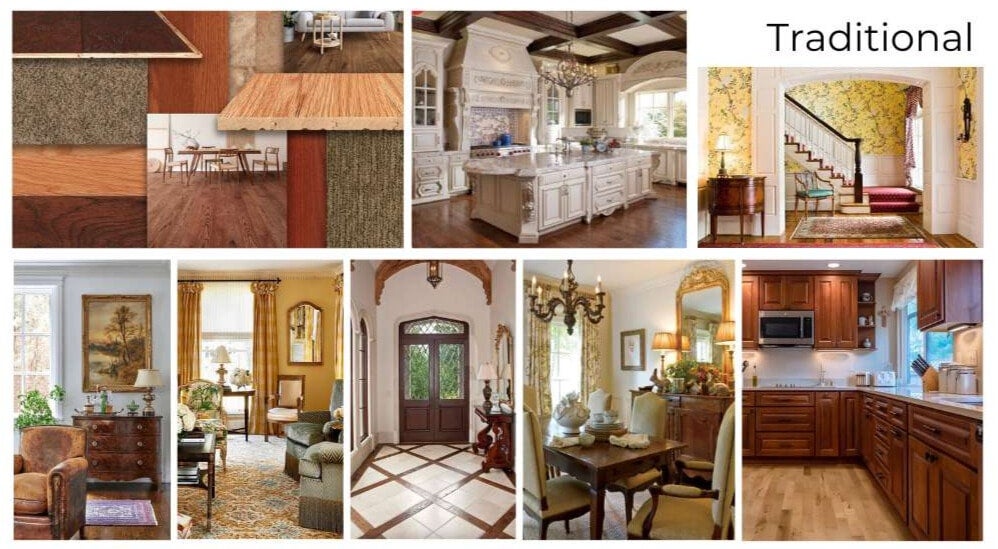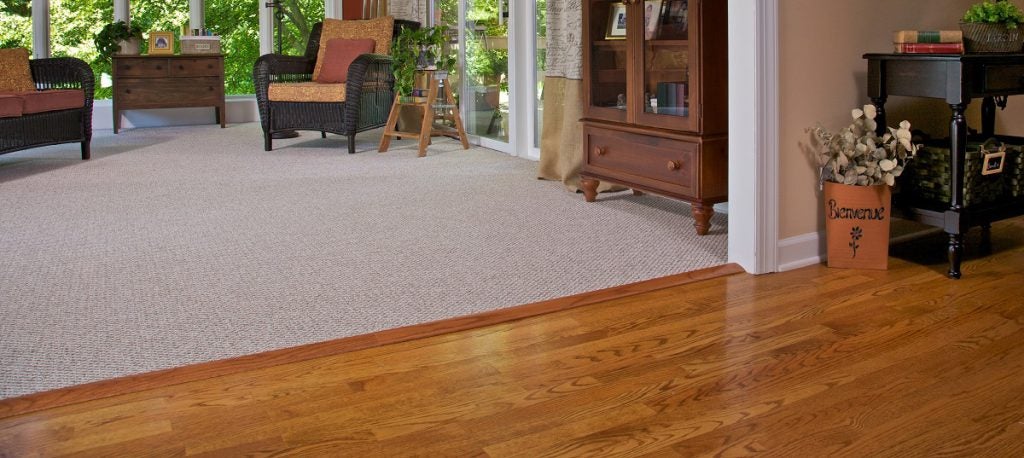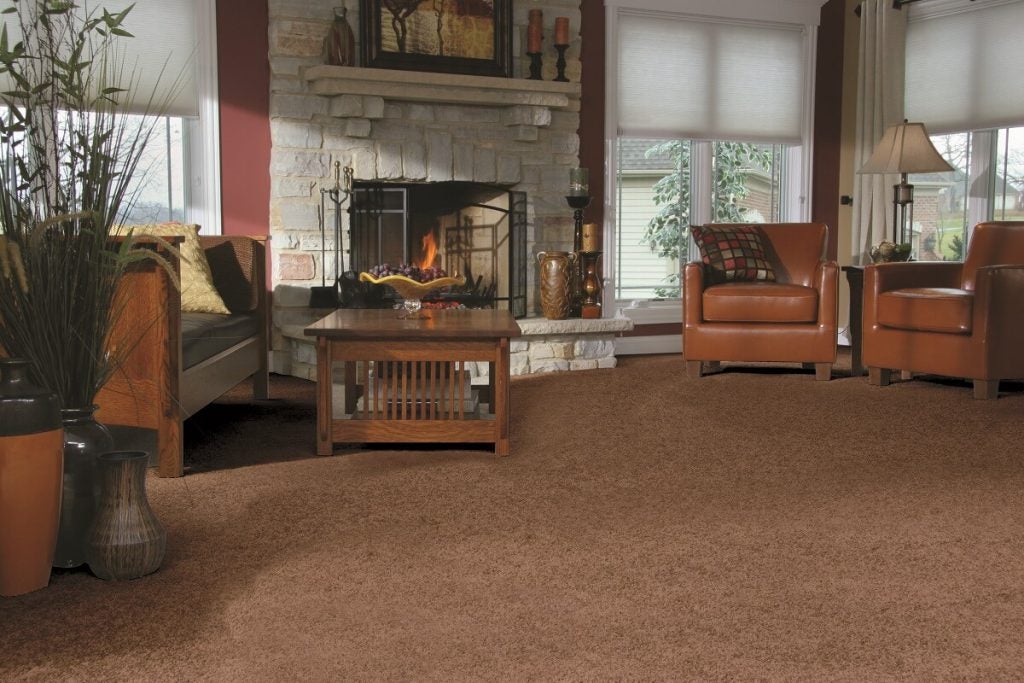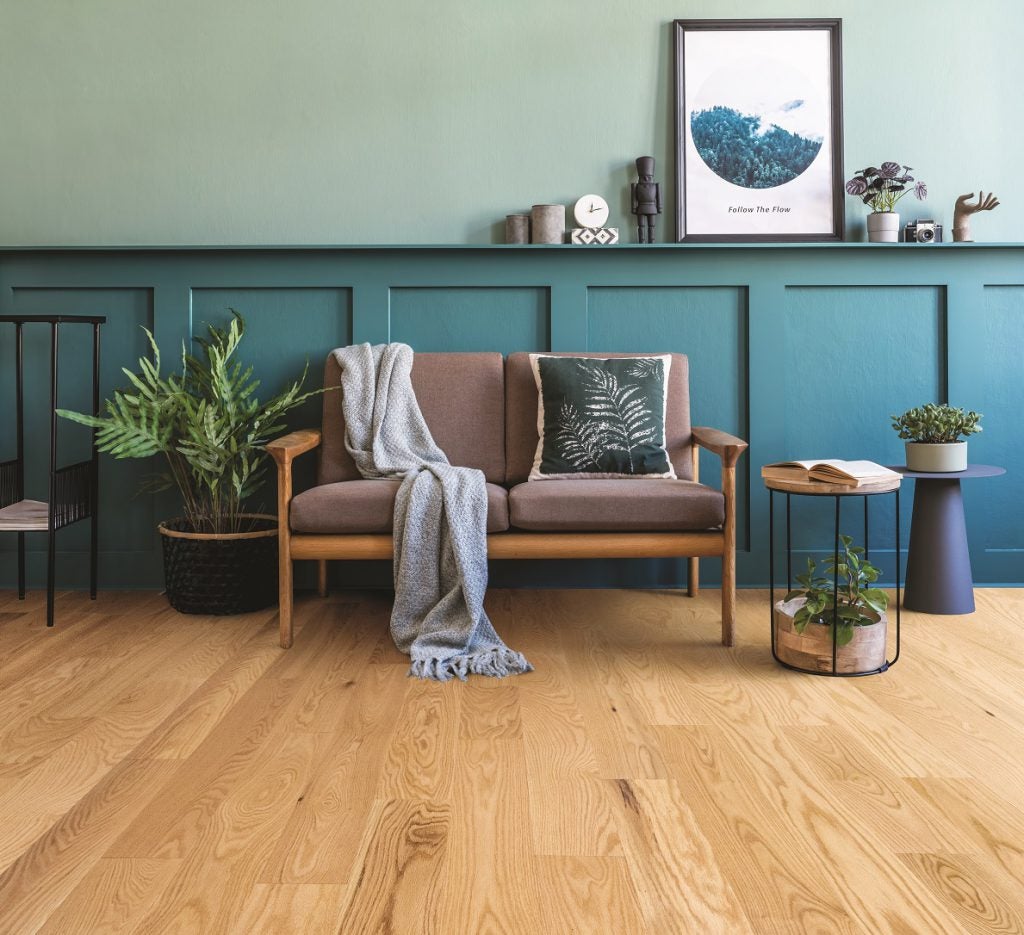These days, when interior design trends can be swayed by the latest popular TikTok video and often seem to change with the seasons, it might feel like traditional home décor no longer has a place in the spotlight. But just because they aren’t getting all the likes on social media, that doesn’t mean that design choices like traditional flooring are old news. In fact, when it comes to home renovations, sticking with traditional flooring trends might be the best bet a homeowner can make—whether they expect to stay in their home for many years to come or resell it in just a year or two.
Like the classic tuxedo or the little black dress, there are some things that will always be in style. Traditional home style is still alive and well, with not only plenty of passionate designers advocating for its use, but also a sprawling selection of building materials, furnishings, and accessories on the market. So, if you’re feeling discouraged about wanting to stick with a more traditional home styling in your upcoming redesign, we’re here to support your decision. In this article, we’re going to take a closer look at what traditional home style is, as well as identify some of the traditional flooring products available from Empire Today® and learn how they can integrate into your design plans.

To best define the idea of traditional flooring materials, let’s back up and take a quick look at traditional style in general—and that might be easiest to do by explaining what traditional style is not. The traditional style is generally considered to be one that does not bend to fleeting trends, isn’t about buying what the hottest new celebrity designer is selling, and eschews ideas like “fast fashion.” Yet, even without adopting the design du jour, traditional style doesn’t feel dated, regardless of its age. A pair of Levi’s 501s from the 90s could be considered traditional, while a pair of JNCO jeans from the same year would most definitely not. Green shag carpet from the 70s would not work in traditional home design, while a warm oak wood floor of the same vintage would.
Traditional design is about honoring the best aesthetic traits of the past, without succumbing to the many fashion blunders that have come and gone. It often melds motifs from multiple eras without ever leaning too much on a singular influence. In a well-designed traditional home, your mid-century modern furniture can peacefully coexist with Victorian wall coverings and your Persian rug.
Fans of traditional flooring and overall home design love the style because it can help set the tone of the entire home. Traditional home décor is a style that is often described in intangible, emotional ways. It evokes a sense of nostalgia, warmth, and an overall welcoming atmosphere. Think of any classic movie about a family of adults getting together for the holidays at their childhood home. That home’s design is usually not up to contemporary style standards, but at the same time, it’s rarely unappealing. It’s a cozy, inviting home. Homes that celebrate traditional style are homes meant to be lived in, in the truest sense.
With all of that said, it’s important to stress that traditional design, and by extension traditional flooring, does not have to specifically include only old materials or accessories. New homes are being built or renovated every day with a style that would be considered traditional. Let’s take a look at some of the flooring products available at Empire® that can be used to create an inviting, traditional home.
What Types of Flooring Fit into a Traditional Home Style?
Classic hardwood is the most common example of a traditional home flooring product. Wood floors were first popularized in colonial America and, aside from a few misguided decades in the middle of last century when beautiful real wood floors were often covered with gaudy linoleum or shag carpet, have been a sought-after material ever since. It’s a material that meshes well with a wide range of aesthetics, fitting into a casual setting as easily as an elegant one. Perhaps most important, wood floors tend to be thought of as inviting. When the average person is asked to imagine a cozy, welcoming room, the odds are high that hardwood flooring will make an appearance.
To further narrow down the style, you can expect to see lots of warm, medium-tone wood, like chestnut, honey maple, or early American. Traditional wood flooring welcomes large grain patterns and even embraces knotting and other irregularities. There’s a lot of overlap with rustic floor styles, though traditional flooring usually doesn’t go to the same extremes. It’s common to see materials with the slight patina of a well-loved home, but not the heavily weathered woods common to many rustic or farmhouse-style rooms.

Carpeting can also play a role in a traditional home, although it tends to be used sparingly. A main floor done almost entirely in oak hardwood might lead into a family room finished in a cozy carpet. As with wood floors, traditional carpet style favors warm, rich colors, and surfaces that beckon guests to enter the room. A traditional home would likely use Berber or plush carpets as opposed to a more upscale product like pattern carpet.
While not as common, tile floors and other stone-look flooring can also fit into a traditionally styled home. The best tile floors for a traditional home would be in neutral or earth-toned colors, without any trendy patterns. Stone can also be a smart choice since the look of classic marble flooring has rarely fallen out of favor. But because it can feel a bit pretentious, its use in a modern traditional home should be limited—perhaps only in the living room, while the rest of the house favors hardwood. This combo creates a nice marriage of the best historical styles, without feeling too stuffy.
Of course, traditional style is not limited to just traditional natural materials since it’s possible to evoke the same feelings and honor past style traditions with today’s manmade products. Most modern composite and engineered flooring types can so accurately mimic any aesthetic that even a high-tech flooring like luxury vinyl plank flooring can easily be used in traditional home design. Wood-look vinyl or laminate floors are an excellent way to enjoy the traditional aesthetic without overextending your budget.
What are the pros and cons of traditional flooring design?
As we’ve mentioned, traditional home design is built upon aesthetics that stand the test of time and which can easily be integrated with a diverse variety of home décor. This enduring quality is itself one of the great practical advantages of choosing a traditional flooring style.

It’s always a gamble to suggest that any particular design style might increase the value of a home when reselling since personal tastes are so diverse. A minimalist, monochromatic interior might be the aesthetic of your dreams, but something so extreme can be off-putting to potential buyers. While most home shoppers expect to put some work into customizing their new homes, the prospect of a full-blown rehab can be dissuading. But because it embraces so many perennially popular style choices, a traditionally designed home is less likely to be a deal breaker to many buyers than something more avant-garde. Think about a beautiful oak floor that was first installed in the 1940s. It may be eight decades old, but as a shining example of traditional design, it probably won’t be seen as a negative for prospective buyers, even if it wasn’t on their wish list. In fact, it might end up being a selling point that the buyers never expected.
And it’s important to remember that traditional home design isn’t necessarily retro or stuck in any particular era. Rather, it reinterprets many elements of older styles to fit in with modern sensibilities. Or it picks the highlights of those eras, the products and materials that have stood the test of time and builds around those. That reverence for the past ends up making many traditional design schemes almost timeless.

As a style defined largely by its widespread agreeability, it’s not easy to find any inherent cons to choosing traditional flooring. Most downsides will be largely based on individual preferences. If your personal style tends to live on the bleeding edge of what’s trendy, this may not be the flooring type for you.
Flooring for traditional homes – where should I start?
For most homeowners, a new floor is expected to last many years—regardless of style. So, when you begin the selection process, it’s important to consider what type of flooring you can see yourself living with for years, or perhaps decades. With products covered by some of the best warranties in the industry, we’re confident that Empire offers plenty of choices of hardwood, carpet, or tile to meet that need.
Regardless of style aspirations, for most people, budget is a major factor in choosing new flooring. But being on a budget doesn’t have to be a disqualification for your dream designs. Contrary to popular belief, you can get floors that are beautiful, long-lasting, and not prohibitively expensive. The spectrum of styles available in sheet vinyl, luxury vinyl plank, or laminate puts traditional design within everyone’s reach.
If you’re ready to take the first step towards your traditional home aspirations, we’re here to help. Empire’s in-home experience gives you the opportunity to see and feel an entire flooring store’s worth of products without ever leaving your home. With the help of a flooring professional, we’re confident you’ll find a product that matches your style dreams along with your budget.
Get the latest updates delivered to your inbox.